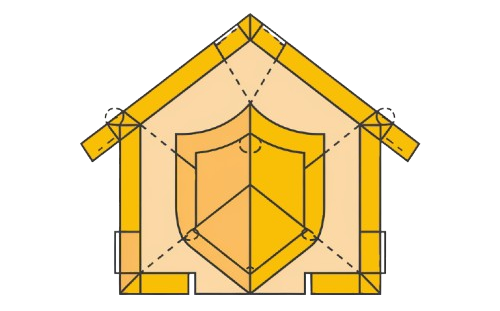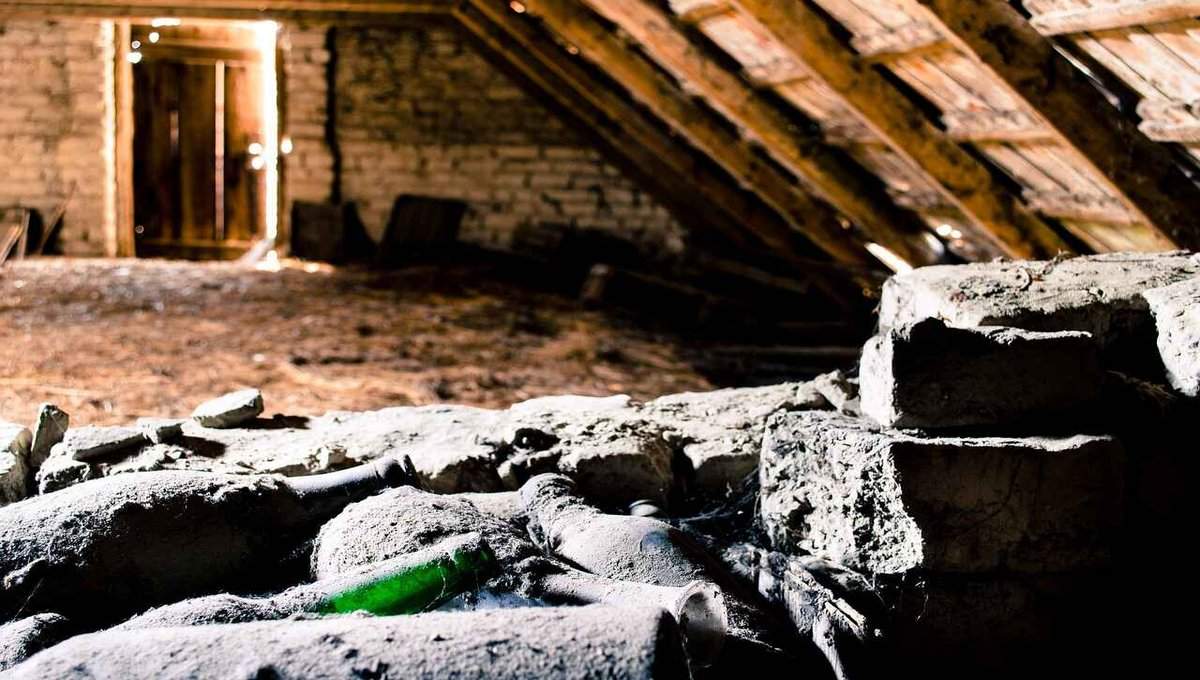Over time, your current insulation may deteriorate, leading to trouble in your house. It could let warm outdoor air inside and cool air escape, causing high energy bills and even posing health risks. Homeowners often experience the effects of poor attic insulation, but it’s sometimes difficult to trace problems back to inefficiency. If your attic insulation is no longer working as it should, upgrading it can reduce costs, improve indoor comfort, and make your home more energy-efficient.As insulation starts to wear, it impacts your wallet and compromises your home’s efficiency. Pay attention to factors that weaken insulation, such as pests or age, and act promptly if you notice something is wrong.
How Long Does Attic Insulation Last?
Knowing when to anticipate the deterioration of your attic insulation is essential for maintaining a comfortable and energy-efficient home. Under ideal circumstances, insulation can last up to 100 years, but normal conditions are rarely ideal. Over the course of home ownership, regularly occurring issues can negatively affect insulation, reducing its lifespan.
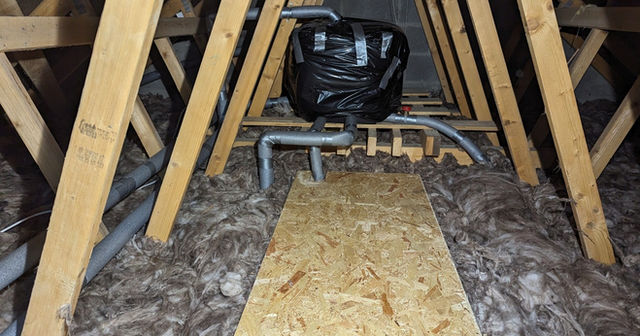
While existing insulation doesn’t retain its protective properties forever, a typical period of 15-20 years is when homeowners should consider scheduling an audit to assess their home insulation. Replacing it at the right time ensures better energy savings and protects your home against inefficiencies.
What Type of Insulation Do You Have?
Before replacing attic insulation, it’s important to examine the common types of insulation in your home. Different variables such as climate, pests, or even construction factors can cause your home’s insulation to deteriorate. Each type of insulation has its own lifespan, so knowing what’s installed can help you plan a general timeline for replacement and ensure your house remains energy-efficient.
Spray Foam Insulation
Spray foam insulation is one of the most durable, effective, and reliable forms of home insulation. It’s mold-resistant and does not retain moisture, making it ideal to insulate attic with spray foam for long-lasting protection. This insulation can endure extended periods, often lasting a lifetime or even a century if undisturbed. While it typically stays in place, factors like inclement weather, critters, or construction issues can lead to it being compromised, requiring replacement or repair.
Whether your insulation is spray foam or another type, it’s essential to identify the indicators of wear or damage early. Doing so helps maintain a comfortable home and prevents costly repairs down the line.
Fiberglass Insulation
Fiberglass insulation is a popular choice for many homeowners because it is both efficient and economical. Available as blown-in or loose-fill, this insulation material is widely used in homes and can survive 80 to 100 years under ideal conditions. However, factors like damage or poor installation can shorten its lifespan. Inspections by certified inspectors or attic specialists are recommended after 15 to 20 years to check for settling or sagging, which can reduce its effectiveness.
If your fiberglass batts have started falling or appear compressed, it may be time for a home energy audit or replacement. While cost-effective and effective, maintaining fiberglass insulation is key to ensuring your home remains comfortable and energy-efficient.
Also Read: Why Choose R49 Insulation for Attic?
Cellulose Insulation
Cellulose insulation is known for being eco-friendly and effective at blocking air leaks, making it a great choice for homeowners looking for sustainable solutions. Made from recycled materials, it has been shown in studies and experiments to protect homes by even helping to prevent fires from spreading. However, its lifespan typically ranges between 20 to 30 years, with degradation sometimes starting as early as 15 years after installation, especially under severe weather conditions or due to outside interference.
Used as a supplementary option in many homes, cellulose insulation can reduce the effects of aging insulation but is not immune to wear. Its life expectancy can be shortened by harsh conditions, leading to a negative impact as it deteriorates over time. Regular inspections can ensure its presence remains beneficial, avoiding potential issues caused by its degradation.
Batt Insulation
Batt insulation, often made of fiberglass, is a cost-effective and easy-to-install option for walls and floors. While blown-in insulation works well for floors, fiberglass batts are commonly used for walls and can last 15 to 20 years before they may start to fall off. This makes regular inspections essential to maintain effectiveness and prevent energy loss.
Foam Board Insulation
Foam board insulation is an excellent alternative to the typical fiberglass batt insulation. With its high R-value per inch, it is both moisture-resistant and simple to work with. Ideal for areas prone to moisture, like an outside foundation or basement, foam boards are more costly but can last up to 100 years due to their stiffness and water resistance. Proper installation is crucial to ensure its longevity and prevent damage.
Mineral Wool Insulation
Mineral wool insulation is becoming increasingly popular due to its durable properties and suitability for home insulation. Its lifespan often depends on the specific product used, such as glass wool, slag wool, or rock wool. Generally, it can last several decades, with estimates ranging from 30 to 80 years, provided the quality of installation is high. However, damage or the presence of compromising factors can significantly shorten its lifespan.
Mineral wool is prone to mold and mildew growth, which means certified attic specialists should replace it if it becomes wet, even if it’s brand new. Like cellulose, it is often used as supplementary insulation alongside longer-lasting materials. Knowing your home’s history is crucial, especially in older houses, which might have low-quality or improperly installed insulation. As a general rule, the longer a house has been standing, the more likely its insulation has been compromised.
Radiant Barrier Insulation
Radiant barrier insulation is an effective solution for attic spaces, particularly for reducing summer heat gain and lowering cooling bills. By reflecting sun rays, this insulation type helps prevent heat from entering your home. Manufacturers build radiant barriers using a thin aluminum sheet that reflects up to 97% of heat that touches the material, stopping it from passing through into the attic.
When certified specialists install radiant barriers appropriately, they can endure for 80 to 100 years, making them a long-term investment with no major drawbacks. This durability and energy-saving capability make it a smart choice for homeowners seeking efficient attic insulation.
Factors That Affect Insulation Lifespan
- Local climate and humidity levels can impact the effectiveness and lifespan of insulation, especially in regions with extreme temperature fluctuations or severe weather conditions.
- Exposure to pests, such as rodents and insects, can cause significant damage by nesting in or chewing through the insulation.
- The quality of the initial installation is crucial. Poorly installed insulation may settle, develop gaps, or become compressed over time, which reduces its effectiveness.
- High humidity can create a favorable environment for mold growth, which compromises insulation’s performance.
How Do I Know My Attic Insulation Should Be Replaced?
If you’re wondering whether it’s time to replace your attic insulation, asking the right questions can help you identify common signs. Keep reading to learn the most typical indicators that your attic insulation may need replacement.
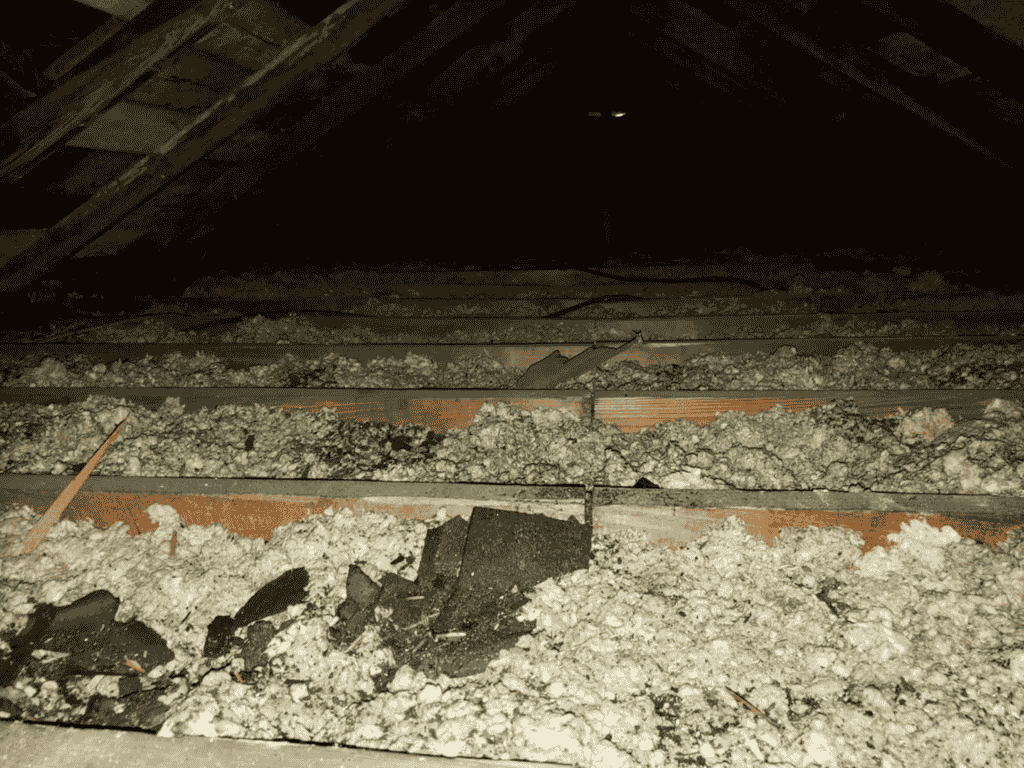
Drafts and Uneven Temperatures
Drafts or uneven temperature zones, especially on the upper floors, are common indicators of insulation deterioration. If certain parts of your living space feel significantly warmer or cooler, it suggests that your insulation may no longer be performing optimally, leaving your home less comfortable and energy-efficient.
Rising Energy Bills
A sudden spike in heating or cooling bills, without any change in your energy use, is another telltale sign of poor insulation efficiency. This often means your insulation is failing to retain the desired indoor temperature, forcing your HVAC system to work harder and drive up costs.
Visible Insulation Damage
Inspect your insulation for visible damage, such as tearing, compression, or general wear and tear. These physical signs indicate that your insulation might need to be replaced to restore its effectiveness and maintain a comfortable, energy-efficient home.
Wet or Moldy Insulation
Wet insulation or mold growth should be replaced immediately upon discovery, as it loses its effectiveness and can lead to further issues. For example, old varieties of fiberglass insulation may become wet due to leakage, causing it to collapse or flatten, which significantly diminishes its ability to insulate. During winter, this could result in an expensive time trying to maintain a conditioned, warm air supply for your home. If insulation becomes exposed to moisture, the problem can easily recur, making regular checks crucial.
Uneven Indoor Temperatures
If you move into a new house, there may be clues that the insulation is poorly installed or deteriorating. A house that feels unreasonably chilly or hot, with heating and cooling costs that soar, often points to poor attic insulation. You might notice rooms filled with cold air while others are sweltering, indicating uneven temperatures. These signs suggest you should investigate the attic, as poor insulation could be the cause of the discomfort.
Unexplained Respiratory Issues and Discomfort
If you or your family members are experiencing unexplained respiratory illness or feel generally uncomfortable in the house, it could indicate improperly installed insulation or insulation that has lost its sealing power. This failure allows allergens, dust, and pollutants to enter through cracks and other air transfer sites, affecting your home’s indoor air quality.
Mold, Mildew, and Poor Sealing
Mold and mildew growth are clear signs of inadequate insulation. Properly installed insulation acts as a protective seal, reducing air and water vapor entry into your home. To maintain and improve air quality, ensure old or damaged insulation is inspected and replaced. This will not only block unwanted particles but also bring peace of mind by creating a safer living environment.
Preventive Measures for Long-Lasting Insulation
Extending the lifespan of your attic insulation through regular maintenance is a proactive approach to keeping your home comfortable and energy-efficient. By addressing potential problems early, you can avoid costly repairs and ensure that your insulation performs at its best. Here are some essential preventive measures every homeowner should follow:
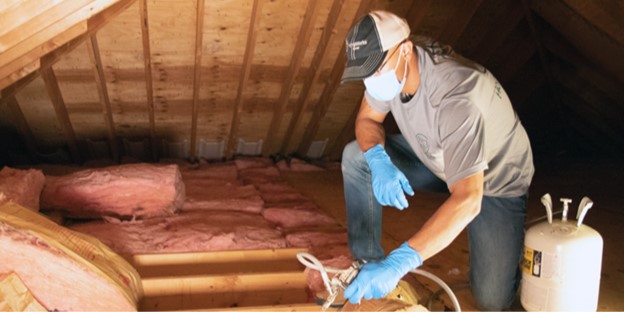
Regular Inspections
Conduct periodic inspections of your attic to check for signs of insulation damage or deterioration. Look for areas where insulation appears torn, compressed, or affected by moisture or pest infestations. Catching issues early can help you prevent further damage and maintain the insulation’s efficiency.
Address Leaks
Any roof or plumbing leaks should be addressed promptly to avoid moisture compromising insulation effectiveness. Water-damaged insulation can lose its insulating properties and promote mold growth, creating both efficiency and health risks. Regularly inspecting for and repairing leaks ensures your insulation remains functional for years to come.
Pest Control
Implementing pest control measures can help deter rodents and insects from entering your attic. These pests can cause significant damage to insulation by nesting in it or chewing through the material. To minimize this risk, focus on sealing potential entry points around your attic to keep unwelcome visitors out.
Proper Attic Ventilation
Ensuring your attic has adequate ventilation is another vital step. Proper airflow helps regulate temperature and humidity, which reduces the risk of moisture-related damage to your insulation. A well-ventilated attic not only extends the lifespan of your insulation but also improves the overall health of your home.
Consult Professionals
When in doubt, always consult certified attic specialists for a thorough assessment of your insulation. These professionals can identify issues that may not be visible to the untrained eye, provide expert guidance on insulation maintenance, and recommend the most appropriate solutions to keep your home well-insulated.
Benefits of Timely Replacement
Regularly replacing your attic insulation at recommended intervals brings significant advantages to both your home and your expenses. By staying ahead of insulation wear, you make a wise investment in your home’s future, ensuring its overall well-being and energy efficiency.
Lower Energy Bills
One of the primary benefits of timely replacement is lower energy bills. Over time, insulation loses its effectiveness, leading to heat loss in the winter and heat gain in the summer. By upgrading insulation, you can significantly reduce heating and cooling costs, making your home more affordable to maintain.
Improved Indoor Comfort
Timely insulation replacement also results in improved indoor comfort. You’ll enjoy more consistent temperatures throughout your home, with fewer drafts and a cozier living environment year-round. This simple step helps create a space that’s both more comfortable and energy-efficient for your family.
Enhanced Air Quality
Old and deteriorating insulation can trap dust, allergens, and even mold, which can lead to poor indoor air quality. This can affect your family’s health and comfort. Replacing attic insulation helps to mitigate these issues, ensuring a healthier living environment for you and your loved ones. By improving air circulation and reducing trapped contaminants, it also promotes a cleaner, fresher home atmosphere.
Reduced Risk of Structural Damage
Inadequate insulation can lead to moisture problems in your attic, which may cause structural damage over time. Excess moisture can weaken materials, making your home more vulnerable to costly repairs. By replacing insulation when needed, you can protect your home from long-term damage, saving you from expensive fixes down the road and ensuring your house remains safe and durable.
Final Thoughts on When to Replace Attic Insulation
Attic insulation can last 80 to 100 years, but it gradually loses energy efficiency over time. Experts recommend upgrading every 15 years to ensure it is still performing optimally. If you experience a roof leak or water damage, prompt repairs are essential to maintain insulation effectiveness. Installing and maintaining insulation keeps your home energy-efficient, comfortable, and in excellent shape. A well-maintained attic ensures your HVAC system doesn’t have to work as hard, helping you save money by avoiding unnecessary repairs or replacements.
Wondering if it’s time to replace your attic insulation? Contact us today, and we’ll connect you with trusted professionals who can assess your home and recommend the best insulation solutions for lasting comfort and efficiency. Stay ahead of costly energy loss with expert guidance!
FAQ
How Do I Know If My Attic Insulation Needs to Be Replaced?
To check if your attic insulation needs replacing, look for signs like increased energy bills, uneven indoor temperatures, or drafts. Inspect for visible damage, such as tears or mold on the materials. If your insulation is over 10-15 years old or has been exposed to moisture or pests, replacement may be required.
How Often Should Attic Insulation Be Changed?
Attic insulation typically lasts 15-20 years, but its lifespan can be shorter depending on factors like your home’s climate, ventilation, and exposure to pests. In areas with extreme temperatures or high humidity, insulation may break down more quickly.
Is Redoing Attic Insulation Worth It?
If your home has old, outdated, or under-insulated areas, you may face higher-than-normal utility bills. Replacing attic insulation can help lower your monthly heat bill, minimize energy loss through the roof, and provide significant savings for homeowners over time.
How Do I Know If My Attic Insulation Is Bad?
- Higher-than-normal electric bills
- Uneven temperature zones
- Draftiness in living spaces
- Moisture issues
- Old insulation
- Presence of pests in the attic
